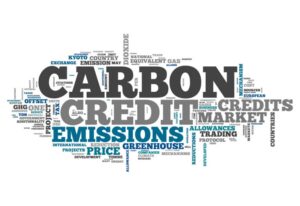How Carbon Credits Are Traded
Carbon Credits Are Traded
Whether you’re a farmer looking to sell carbon credits, a project developer seeking financing, or an individual trying to offset your own emissions, you need to know the basic details of how carbon credits are traded. If you haven’t heard of them, they are a type of carbon emission reduction certificate that can be purchased and traded in the voluntary market. They are a great way to fight climate change and can also help to stimulate innovation.
There are two main ways that carbon.credit can be traded: over the counter (OTC) or through core contracts. Both methods have their advantages and disadvantages. Over the counter trading can be time consuming and inefficient. There are also limited pricing data and other attributes that may make it difficult to assess the fair value of a credit.

To help determine a fair price, the buyer needs to know the attributes associated with the underlying project. A common taxonomy could be used to identify the attributes and classify credits. This would allow for a standardized approach to pricing and a clear market price. If a reference contract could be formulated, the prices of the various reference contracts could then be used as a starting point for OTC trades.
How Carbon Credits Are Traded
In addition, a governance body can help to oversee the functioning of the voluntary carbon market and ensure that participants are not participating in fraudulent activities. A governance body can also act as a deterrent to fraud by imposing anti-money laundering guidelines and know your customer requirements.
The use of a core carbon reference contract allows companies to buy large quantities of carbon credits without the need to enter into an auction. The reference contract can be either a spot or futures contract. In addition to allowing for easy buying and selling of credits, the reference contract can provide daily or weekly price signals. This helps to reduce the risk of over-priced credits and can lead to increased supplier financing.
The voluntary carbon market is fragmented and lacks liquidity for efficient trading. While a well-functioning market would help to support progress towards a low-carbon future, it could be challenging to build. To address this issue, the Institute for International Finance has established a private-sector Taskforce on Scaling Voluntary Carbon Markets. It’s goal is to develop a blueprint for building a scalable, robust voluntary carbon market.
To be successful, a scalable and liquid voluntary carbon market will need a resilient and flexible infrastructure to accommodate high volume listing of reference contracts. This infrastructure will also need to be environmentally robust and transparent to enable efficient trading of these credits.
In addition to developing a more streamlined structure, the voluntary carbon market will need to be able to meet its most important requirement: the ability to signal demand. This can be done by establishing a registry of commitments to purchase carbon credits. The registry can then be used to track the medium-term demand for the carbon market. The registry can also be used as a means of ensuring that the supply of carbon credits matches the demand.